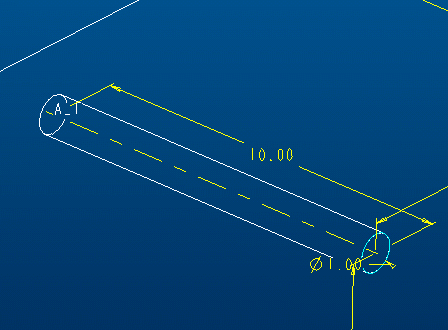Analysis Characteristics
- Steady-state
- Three Dimensional External Flow
- Turbulent
- Incompressible Flow
Reference
White, F. M., “Fluid Mechanics,” McGraw-Hill, Inc., New York, 1979, pp. 283-285.
Problem Description
For this case, we simulate air flowing past a circular cylinder. Using the Autodesk® CFD-calculated forces, we then compute the drag coefficient and compare it to data from the Reference.
For a cylinder, the drag coefficient is calculated using:

where L is the cylinder length and d is the cylinder diameter.
Geometry and Boundary Conditions

L = 20 inches (A symmetric geometry is used)
d = 1.0 inches.
The cylinder is surrounded by a box that is 10 inches from the end of the cylinder and 20 inches above, below, on the inlet and on the outlet ends.
Results
The Reynolds number (based on the cylinder diameter) is 105. The drag coefficient is calculated from the drag force:

| Benchmark | 2016: Build 20150209 | % Error | 2017: Build 20160302 | % Error | |
| Re=10^5 | CD = 0.91 | 0.901 | 0.993 | 0.943 | 3.688 |